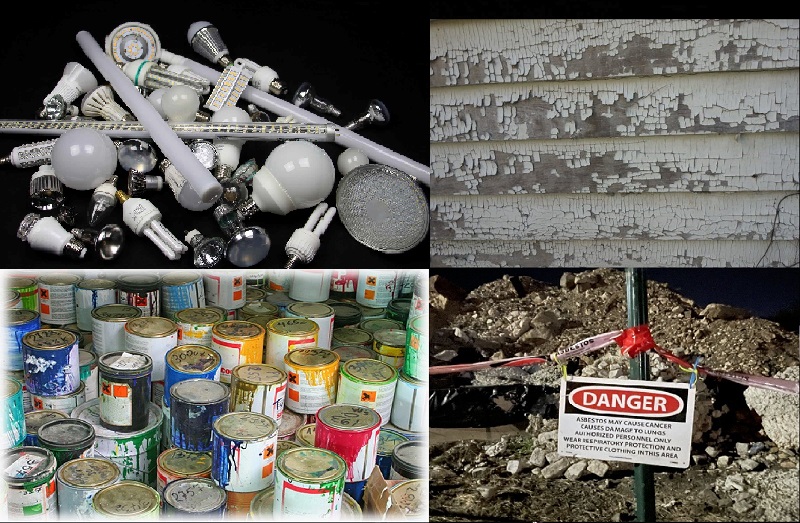
Construction, Demolition and Remodeling projects have the potential to generate hazardous wastes which are regulated by local, state and federal regulations. These wastes can consist of lead, asbestos, lamps, ballasts, PCBs, e-wastes, paints, etc. which may have a requirement to be managed as a Regulated Hazardous Waste, Industrial Waste or Recycled. Please contact Occupational and Environmental Safety Hazardous Materials/Environmental Compliance Manager for more information.
-
What are construction site hazardous materials / waste?
All construction sites, whether new construction, remodeling or demolition, have the potential to generate some form of regulated wastes. These wastes may consist of construction debris contaminated with lead, paints, articles contaminated with mercury, electronic waste, lamps and polychlorinated biphenyls (PCBs) among other materials/wastes. All of these materials are regulated by local, state and/or federal regulations. Please contact OES Environmental Compliance Manager for more information or refer to the Guidance Spreadsheet (XLSX).
-
General Guidance
Occupational and Environmental Safety is here to assist in guidance with the proper management of hazardous materials/wastes at construction sites. Please refer to the Guidance Spreadsheet (XLSX) and contact the appropriate person/department referred to for the material/waste you have.
Hazardous Materials/Wastes from construction sites should be properly managed and disposed of whether the work is performed by Clemson University Facilities or outside contractors.
Buildings that are to be demolished must be assessed (a process known as Environmental Hazard Assessment) to determine if they contain or are themselves a hazardous waste.
Older buildings are often painted with lead paint and paints containing mercury-based biocides, use leaded pipes, have asbestos insulation, use mercury-containing fluorescent lamps and PCB ballasts and contain many other hazardous materials.
Besides demolition debris, other wastes are generated during new building construction to include but not limited to treated wood, paint and solvent wastes, glues, roofing tars and cylinders.
Many buildings are carefully de-constructed for material reuse, and these types of projects can also generate similar Hazardous wastes. Deconstructed materials that are reused are not regulated as waste as long as the properties making them hazardous are not disturbed. For example, a door painted with lead-based paint could be reused as is, even if it would otherwise be regulated as dangerous waste when disposed. -
Questions? Need more help?
If you have any questions, comments and/or concerns, please do not hesitate to contact the Hazardous Materials Manager.

